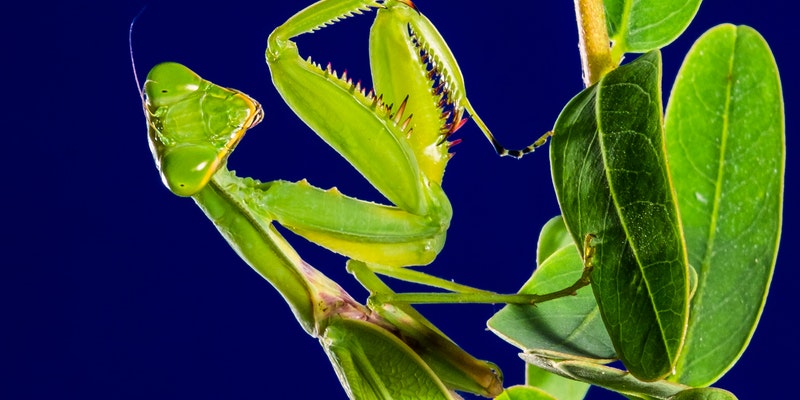The praying mantis is an interesting species. The name comes from the appearance of their folded arms in a "praying" posture. These creatures have long been associated with magical or fantasy themes. The Greek word mantis means prophet. The name praying mantis could be translated “praying prophet.” The only invertebrate with the ability to see in 3D, this insect is full of surprises.
Here are 8 fascinating facts about the praying mantis for you to ponder.
- Mantids “praying” arms “preying” arms – they capture prey! Praying mantis' long legs serve a predatory function. When they elongate their legs, spines hold onto their prey. These insects are one of the few insects with this special adaptation.
- Mantids live all over the United States. With a total of 2,300 species across the world, there are about 20 common to the U.S.
- Mantids cannot survive freezing temperatures. When they are in a cold-weather climate, they lay hundreds of eggs glued together in a case called an ootheca. This is the way they ensure the survival of their species. You may find one wrapped around a tree limb or fence wire. While hundreds of eggs are laid, only a few will mature.
- Mantids can detect echolocation sounds emitted by bats. If a bat is closing in, a mantid can use its large spiny front legs to deter the bats. While a mantid may be a bat dinner, it is not a fast food option!
- Mantids are masters of camouflage. Mantids are masters of blending in their environment. Colors vary from traditional bright green to darker shades of brown and black. While not found in the U.S., there is the orchid mantis, found in Southeast Asia. Nicknamed the walking flower mantis, their legs resemble pink orchid flower petals.
- Mantids cannot harm humans. Although they’re fierce predators in the insect world, mantids do not have venom or a sting that can harm a human. They pose no harmful threat to a human.
- Hummingbirds, watch out! Praying mantis lighting fast striking serves as a predatory advantage. Research has shown even birds are vulnerable to these quick reflexes. Research shows species of birds, including 7 humming birds, are vulnerable to attack.
- Praying Mantis can see in 3D. In 2014 studies began showing that praying mantis have “stereopsis” or 3D vision. They are the ONLY invertebrates with this ability. The study was used to help the development of robot eyes.
How many facts did you know? If you love learn, find out more about various insects and pests on our learning center.
Do you have a favorite bug you want to see us feature? Hop on over to our Facebook page and let us know!


Recent Comments